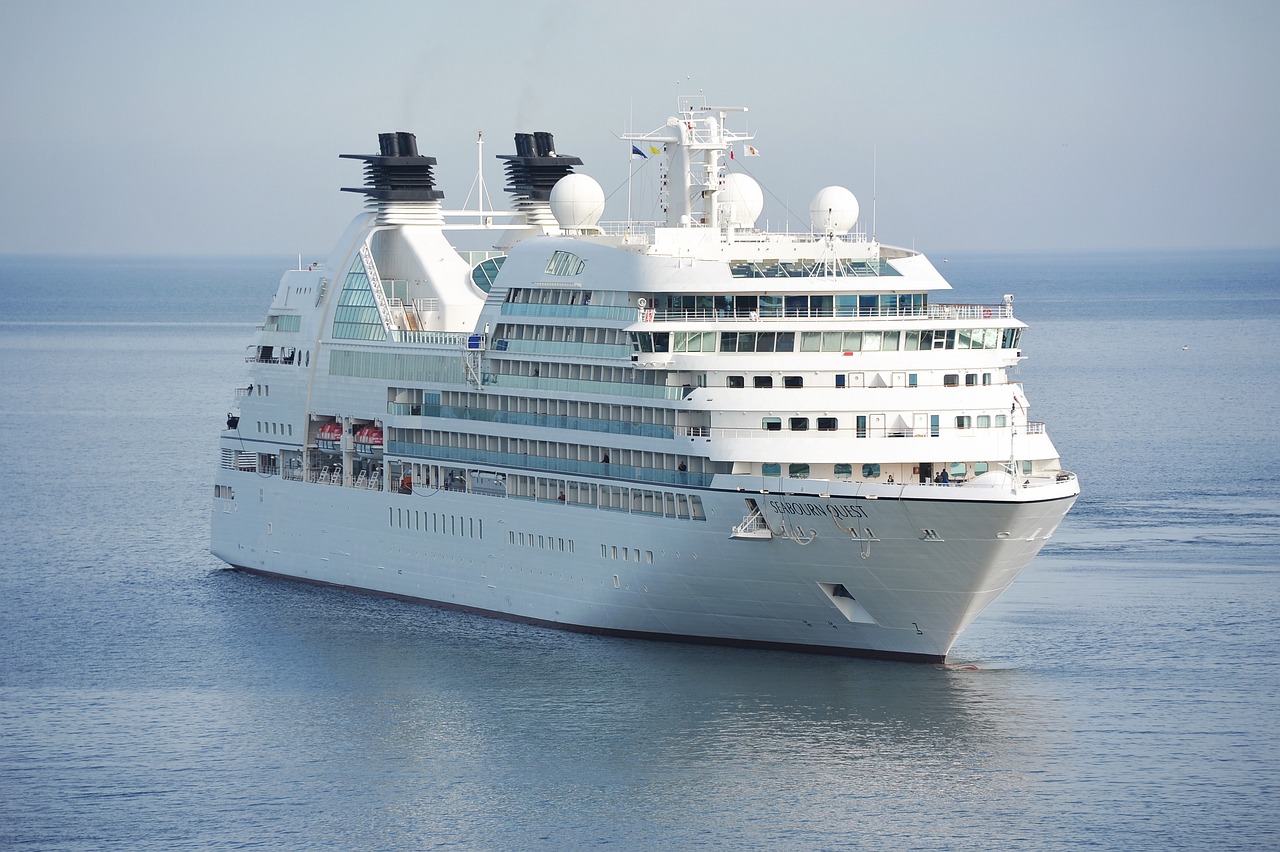
Planning a vacation can be exciting, but when you or a loved one relies on a wheelchair for mobility, finding accommodations that are accessible can be a top concern. So, you may find yourself wondering: are there wheelchair-accessible cabins on Caribbean cruise ships? With stunning views, crystal clear waters, and vibrant cultures, Caribbean cruises are a popular choice for many travelers. And the good news is, the cruise industry has made great strides in enhancing accessibility for all passengers, including those with mobility challenges. In this article, we will explore whether wheelchair-accessible cabins are available on Caribbean cruise ships, so you can make an informed decision for your next getaway.
Barrier-Free Cruising
Overview
Barrier-free cruising refers to the availability of accessible facilities and services on cruise ships that cater to passengers with disabilities. This ensures that individuals with mobility impairments or other special needs can enjoy a comfortable and hassle-free cruise experience. From wheelchair-accessible cabins to accessible routes and amenities, cruise lines are increasingly focusing on making their ships more inclusive for all passengers.
Importance of Accessibility
Accessibility is of utmost importance when it comes to creating an inclusive and enjoyable vacation experience for individuals with disabilities. Being able to navigate the ship easily, access amenities and participate in various activities is essential for these passengers to fully enjoy their time onboard. By providing wheelchair-accessible cabins and other accessible features, cruise lines are not only meeting the needs of a diverse range of passengers but also promoting equal opportunities for everyone to explore the world through cruising.
Wheelchair-Accessible Cabins
Wheelchair-accessible cabins are specially designed accommodations on cruise ships that cater to passengers with mobility impairments. These cabins are specifically equipped to provide comfort and convenience to wheelchair users, ensuring easy access and a safe environment. Some of the features of wheelchair-accessible cabins may include wider doorways, roll-in showers, grab bars, lower sinks, and plenty of space to maneuver a wheelchair. These cabins are strategically located throughout the ship to ensure easy accessibility to key areas and facilities.
Benefits of Wheelchair-Accessible Cabins
The availability of wheelchair-accessible cabins on cruise ships brings several benefits for individuals with disabilities. Firstly, these cabins provide a safe and comfortable space where passengers can relax and enjoy their privacy. The wider doorways and roll-in showers allow for easy maneuverability, eliminating barriers that may otherwise be present in standard cabins. Additionally, the proximity of these cabins to key areas of the ship, such as dining venues and entertainment spaces, allows wheelchair users to access these amenities conveniently. Overall, wheelchair-accessible cabins ensure that individuals with mobility impairments can experience a worry-free and enjoyable cruise vacation.
Caribbean Cruise Ships
Popular Caribbean Cruise Lines
The Caribbean is a top destination for cruise vacations, offering stunning beaches, vibrant culture, and a variety of exciting activities. Several popular cruise lines operate in the Caribbean, catering to a diverse range of passengers. Some of the well-known Caribbean cruise lines include Royal Caribbean International, Carnival Cruise Line, Norwegian Cruise Line, and Disney Cruise Line. These cruise lines offer a wide range of itineraries and ship options to suit different preferences and budgets.
Accessible Cruise Ships in the Caribbean
In recent years, cruise lines operating in the Caribbean have made significant efforts to enhance accessibility on their ships. Many Caribbean cruise ships now offer wheelchair-accessible cabins and accessible facilities to cater to passengers with disabilities. These ships are equipped with ramps, elevators, and wider corridors to ensure easy navigation for wheelchair users. Additionally, they provide accessible dining venues, entertainment areas, and accessible pool areas to ensure that all passengers can enjoy their cruise experience without limitations.
Features of Wheelchair-Accessible Cabins on Caribbean Cruise Ships
Wheelchair-accessible cabins on Caribbean cruise ships are designed to provide maximum comfort and convenience for passengers with disabilities. These cabins typically feature wider doorways, spacious interiors, and storage areas that can accommodate mobility equipment such as wheelchairs and scooters. The bathrooms in these cabins are equipped with roll-in showers, grab bars, and accessible sinks. The beds and seating accommodations are designed to provide comfort and easy access for individuals with mobility impairments. Overall, the wheelchair-accessible cabins on Caribbean cruise ships prioritize the needs and comfort of passengers with disabilities, ensuring a seamless cruising experience.

Choosing the Right Cruise Line
Researching Cruise Lines
When choosing a cruise line, it is essential to research and compare the accessibility features offered by different cruise lines. Look for information on their websites, check reviews, and reach out to fellow travelers with disabilities to get firsthand experiences. Pay attention to the accessibility features of the ships, including the availability of wheelchair-accessible cabins, accessible routes, and amenities. It is also important to consider the accessibility of the ports of call and shore excursions offered by the cruise line.
Contacting Cruise Lines Directly
To gather more detailed information about the accessibility features on a specific cruise line, it is advisable to contact the cruise line directly. Their customer service representatives can provide up-to-date information on the availability of wheelchair-accessible cabins, accessibility features on the ship, and any additional accommodations that may be required.
Accessible Ship Information
Cruise lines typically provide accessible ship information on their websites. This information details the accessibility features of the ship, including the location and specifications of wheelchair-accessible cabins, accessible routes, and amenities. It is important to thoroughly review this information to determine if the ship meets your specific accessibility needs.
Booking for Wheelchair-Accessible Cabins
When booking a cruise, it is important to specify the need for a wheelchair-accessible cabin. Most cruise lines have a limited number of these cabins, and they tend to be in high demand. By booking early and clearly expressing the need for accessibility accommodations, you can ensure that you secure a wheelchair-accessible cabin for your cruise vacation. It is also advisable to confirm the accessibility features with the cruise line directly before finalizing your booking.
Facilities and Amenities
Accessible Routes and Spaces
Cruise ships that prioritize accessibility ensure that there are accessible routes and spaces throughout the ship. This includes wider corridors, ramps, and elevators to enable easy navigation for individuals using wheelchairs or mobility devices. Additionally, the ship’s layout is designed to minimize barriers and obstacles, providing a smooth and safe environment to move around.
Bathroom Accessibility
Bathroom accessibility is a crucial aspect of ensuring a comfortable cruise experience for individuals with disabilities. Wheelchair-accessible cabins on cruise ships are equipped with roll-in showers that have a barrier-free entry, grab bars for added support, and accessible sinks and counters. These features allow for easy and independent use of the bathroom facilities, promoting a sense of privacy and dignity for passengers with disabilities.
Bed and Seating Accommodations
Cruise lines understand the importance of providing comfortable and accessible sleeping arrangements for passengers with mobility impairments. Wheelchair-accessible cabins typically offer lower beds and ample space for maneuverability, ensuring ease of transfer from a wheelchair to the bed. Additionally, seating accommodations in the cabins and common areas are designed to provide comfort and support for individuals with disabilities.
Storage and Closets
Wheelchair-accessible cabins are equipped with storage areas and closets that are designed to accommodate mobility equipment such as wheelchairs and scooters. These storage spaces ensure that passengers with disabilities have a designated area to store their equipment, allowing for a clutter-free and accessible cabin environment.
Entertainment and Dining Areas
Cruise ships that prioritize accessibility ensure that entertainment and dining areas are accessible to all passengers. This includes accessible seating options, ramps or elevators for easy access, and assistance available for individuals with disabilities. Whether it’s a Broadway-style show, a live music performance, or a fine dining experience, individuals with disabilities can enjoy these amenities alongside their fellow passengers.

Bathroom Accessibility
Roll-In Showers
Bathroom accessibility is an essential aspect of ensuring an inclusive cruise experience. Roll-in showers are a key feature of wheelchair-accessible cabins on cruise ships. These showers have a barrier-free entry, allowing wheelchair users to roll directly into the shower area without any obstructions. This design eliminates the need for stepping over a ledge, ensuring that passengers with mobility impairments can independently use the shower facilities.
Grab Bars and Handrails
To enhance safety and support for individuals with disabilities, wheelchair-accessible cabins are equipped with grab bars and handrails in the bathrooms. These additional fixtures provide stability and reassurance for passengers while using the facilities. Grab bars are strategically placed near toilets, sinks, and showers, ensuring that passengers can maintain their balance and move with ease.
Accessible Sinks and Counters
Accessible sinks and counters in wheelchair-accessible cabins are designed to accommodate individuals using wheelchairs or mobility devices. The sinks are positioned at a lower height, allowing wheelchair users to comfortably reach the faucet and basin without any strain. This ensures that individuals with disabilities can independently carry out their daily hygiene routines without encountering any barriers.
Toilet Accommodations
Toilet accommodations in wheelchair-accessible cabins are designed to meet the specific needs of passengers with mobility impairments. The toilets are positioned at a height that allows for easy transfer from a wheelchair, and there is ample space around the toilet to maneuver a wheelchair comfortably. These accommodations ensure that passengers with disabilities can use the toilet facilities with ease and independence.
Mobility Equipment
Wheelchair Storage
Wheelchair-accessible cabins on cruise ships provide storage areas designated for mobility equipment such as wheelchairs, walkers, and scooters. These storage spaces are specifically designed to safely secure the equipment and keep the cabin area clutter-free. Passengers with disabilities can rest assured knowing that their mobility equipment is secure and easily accessible whenever needed.
Ramps and Elevators
To facilitate ease of movement for individuals with mobility impairments, cruise ships are equipped with ramps and elevators. Ramps ensure smooth transitions between areas with different levels, allowing wheelchair users to move seamlessly throughout the ship. Elevators provide convenient access to various decks, ensuring that passengers with disabilities can explore all the ship’s amenities without limitations.
Accessible Pool Areas
Many cruise ships feature accessible pool areas designed to accommodate individuals with disabilities. These pool areas typically include pool lifts or sloped entries to ensure that passengers with mobility impairments can safely enter and enjoy the pool. Accessible seating options and nearby restrooms further enhance the accessibility and convenience of the pool areas.
Shore Excursions
Cruise lines offer a variety of shore excursions to explore the ports of call during the cruise. When planning these excursions, it is important to consider the accessibility of the activities and destinations. Some ports may be more accessible than others, with features such as accessible transportation, ramps, and accessible facilities. It is advisable to research and inquire with the cruise line about the accessibility of the shore excursions to ensure a seamless and enjoyable experience for individuals with disabilities.

Cruise Policies and Assistance
Assistance with Embarkation and Disembarkation
Cruise lines recognize the importance of providing assistance to passengers with disabilities during embarkation and disembarkation processes. Special services and dedicated personnel are available to assist individuals with disabilities with their luggage, boarding procedures, and navigating the ship’s gangways. This assistance ensures a smooth transition on and off the ship, allowing passengers with disabilities to embark on their cruise vacation without any inconveniences.
Accessible Tender Service
When a cruise ship anchors offshore and passengers need to be transported to the port via smaller boats known as tenders, accessible tender services may be available. These services provide wheelchair-accessible transportation options, ensuring that passengers with disabilities can safely and comfortably reach the designated port area. It is advisable to inquire with the cruise line about the availability of accessible tender services when planning shore excursions.
Cruising as a Deaf or Hard-of-Hearing Passenger
Cruise lines strive to accommodate passengers with various disabilities, including those who are deaf or hard of hearing. Communication accommodations may include visual emergency alert systems in cabins, visual indicators in public areas, and the availability of assistive listening devices during onboard performances and activities. Additionally, staff members may have training in basic sign language or use written communication to assist individuals who are deaf or hard of hearing.
Service Animals and Pet Policies
Cruise lines have specific policies regarding the accommodation of service animals and pets onboard their ships. Passengers with disabilities who rely on service animals are generally allowed to bring their trained animals onboard, as long as they comply with the cruise line’s policies and regulations. It is important to familiarize yourself with these policies and ensure that you provide all necessary documentation and comply with any requirements before bringing a service animal onboard.
Creating an Accessible Itinerary
Selecting Accessible Ports of Call
When planning a cruise itinerary, it is important to consider the accessibility of the ports of call. Some destinations may have limited accessibility features, such as uneven terrain or limited accessibility infrastructure. Researching and selecting ports that offer accessible transportation, ramps, and accessible facilities can ensure a more inclusive and enjoyable experience for individuals with disabilities.
Planning Accessible Shore Excursions
Shore excursions are an integral part of a cruise vacation, and it is essential to plan excursions that cater to the accessibility needs of all passengers. Cruise lines often offer a variety of excursions, including options specifically designed for individuals with disabilities. These accessible excursions may include wheelchair-accessible transportation, accessible sites and attractions, and knowledgeable guides who are trained to assist individuals with disabilities. It is advisable to review the available excursions and consult with the cruise line to select options that best suit your accessibility needs and interests.
Accessibility Awareness at Ports
While cruise lines strive to ensure accessibility onboard their ships, it is also important to consider the accessibility of the port areas. Some ports may have limited accessibility infrastructure, including uneven surfaces and steep inclines. However, many ports are working towards improving accessibility features to accommodate passengers with disabilities. It is advisable to research and inquire about the accessibility of the port areas to ensure a smooth and enjoyable experience during your time ashore.
Accessible Services and Staff
Accessible Onboard Services
Cruise lines offer a range of onboard services designed to cater to the needs of passengers with disabilities. These services may include accessible transportation within the ship, priority seating arrangements in the dining venues and theaters, and accessible cabins equipped with various amenities. Additionally, cruise lines often provide accessible shore excursion options, allowing passengers with disabilities to explore the ports of call with ease.
Trained Staff for Accessibility Needs
Cruise lines are committed to training their staff to provide excellent service to passengers with disabilities. Staff members undergo training programs that cover a range of accessibility-related topics, including assisting individuals with mobility impairments, providing guidance to passengers with visual impairments or hearing loss, and addressing communication needs. Trained staff members are equipped to offer assistance and support throughout the cruise, ensuring that passengers with disabilities have a positive and inclusive experience.
Medical Services and Assistance
Cruise ships typically have medical facilities and medical professionals onboard to provide medical services and assistance as needed. Passengers with disabilities can access medical services for their specific needs if required during the cruise. It is advisable to inquire about the availability and accessibility of medical services when booking the cruise and to ensure that any necessary medical documentation or medication is brought onboard.
Reviews and Feedback
Online Reviews and Forums
When researching accessible cruising options, online reviews and forums can provide valuable insights from fellow travelers with disabilities. Reading about the experiences and feedback of others who have previously cruised can help in assessing the accessibility features of different cruise lines and ships. These reviews often highlight the strengths and areas for improvement in terms of accessibility, offering firsthand information to guide your decision-making process.
Accessing Cruise Accessibility Feedback
Cruise lines often collect feedback from passengers regarding their accessibility experiences onboard. This feedback may include suggestions for improvements and comments on the effectiveness of the accessibility features. Accessing this feedback can provide valuable information about the accessibility efforts and initiatives of different cruise lines and ships. It also allows the cruise lines to continually evaluate and enhance their accessibility provisions based on the feedback received.
Sharing Your Experience
After your accessible cruise experience, sharing your feedback and experiences can benefit other individuals with disabilities who are considering a cruise vacation. Writing reviews on travel websites and participating in online forums can help in creating a supportive community and providing valuable information to future cruisers. By sharing your firsthand experiences, you can contribute to raising awareness about accessible cruising and encouraging cruise lines to continue improving their accessibility efforts.



